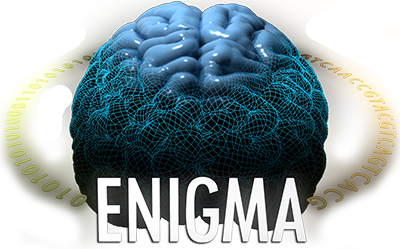
ENIGMA-Meditation is a new international collaboration dedicated to examining and understanding neuroanatomical and neurofunctional underpinnings of different contemplative practices (e.g., different techniques of meditation, mindfulness, yoga and other contemplative mind-body practices). This group's aim is to bring together meditation and contemplative neuroimaging research from across geographies, and facilitate large-scale meta- and mega-analyses (of pooled neuroimaging datasets) using carefully planned, standardized image processing and statistical analysis protocols. Through such large-scale collaborative projects, our primary goal is to systematically and reliably characterize the neurobiology of various meditation and contemplative practices, and investigate how their neurobiology relates to behavioural, psychological and cognitive attributes and outcomes.
ENIGMA-Meditation Working Group Memorandum of Understanding (MOU): Meditation Working Group members are asked to sign a short MOU agreement that has been standardized across the ENIGMA projects. This MoU will provide basic framework to protect data privacy, facilitate data sharing, encourage academic productivity, ensure appropriate authorship and publication credit. It implements a system to track and archive data, analyses and publications related to the Meditation Working Group.
Our call for participation is open!
We look forward to welcoming new collaborators with relevant MRI data of meditation and contemplative practices from anywhere in the world! If interested, please also fill up this 3-minute survey - short data query poll. The survey is to gather basic information about available data from cohorts that are interested in participating in this initiative.
Working group chairs and points of contact:
- Dr. Anthony King, OSU Program for Resilience, Department of Psychiatry & Behavioral Health and Psychology, Ohio State University, Ohio, USA
- Dr. Saampras Ganesan, Melbourne Neuropsychiatry Centre, Department of Psychiatry, Department of Biomedical Engineering & Contemplative Studies Centre, University of Melbourne, Australia.
For more information, please contact us at Anthony.King@osumc.edu, saamprasg@student.unimelb.edu.au and saampras.ganesan@gmail.com.
Publications from ENIGMA-Meditation:
- Ganesan, S., Barrios, F. A., Batta, I., Bauer, C. C. C., Braver, T. S., Brewer, J. A., Brown, K. W., Cahn, R., Cain, J. A., Calhoun, V. D., Cao, L., Chetelat, G., Ching, C. R. K., Creswell, J. D., Dagnino, P. C., Davanger, S., Davidson, R. J., Deco, G., Dutcher, J. M., Escrichs, A., … King, A. P. (2024). ENIGMA-Meditation: Worldwide consortium for neuroscientific investigations of meditation practices. Biological psychiatry. Cognitive neuroscience and neuroimaging, S2451-9022(24)00314-8. Advance online publication. https://doi.org/10.1016/j.bpsc.2024.10.015
A non-exhaustive list of some relevant and recent meta-analytic papers in meditation neuroimaging:
- Ganesan, S., Beyer, E., Moffat, B., Van Dam, N. T., Lorenzetti, V., & Zalesky, A. (2022). Focused attention meditation in healthy adults: A systematic review and meta-analysis of cross-sectional functional MRI studies. Neuroscience and biobehavioral reviews, 141, 104846. https://doi.org/10.1016/j.neubiorev.2022.104846
- Rahrig, H., Vago, D. R., Passarelli, M. A., Auten, A., Lynn, N. A., & Brown, K. W. (2022). Meta-analytic evidence that mindfulness training alters resting state default mode network connectivity. Scientific reports, 12(1), 12260. https://doi.org/10.1038/s41598-022-15195-6
- Fox, K. C., Dixon, M. L., Nijeboer, S., Girn, M., Floman, J. L., Lifshitz, M., Ellamil, M., Sedlmeier, P., & Christoff, K. (2016). Functional neuroanatomy of meditation: A review and meta-analysis of 78 functional neuroimaging investigations. Neuroscience and biobehavioral reviews, 65, 208–228. https://doi.org/10.1016/j.neubiorev.2016.03.021
- Fox, K. C., Nijeboer, S., Dixon, M. L., Floman, J. L., Ellamil, M., Rumak, S. P., Sedlmeier, P., & Christoff, K. (2014). Is meditation associated with altered brain structure? A systematic review and meta-analysis of morphometric neuroimaging in meditation practitioners. Neuroscience and biobehavioral reviews, 43, 48–73. https://doi.org/10.1016/j.neubiorev.2014.03.016


